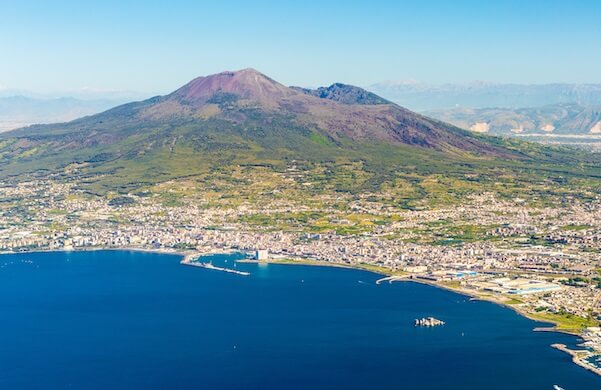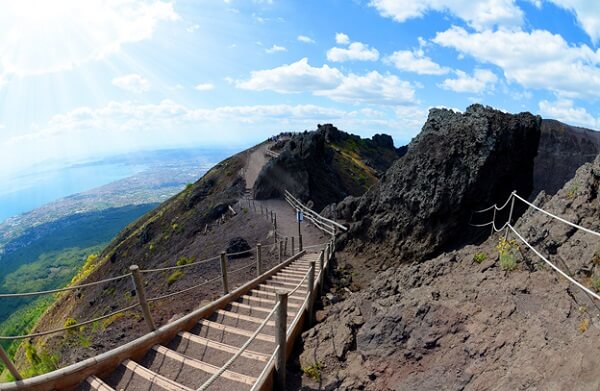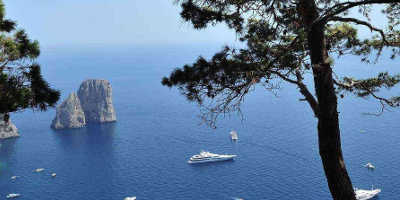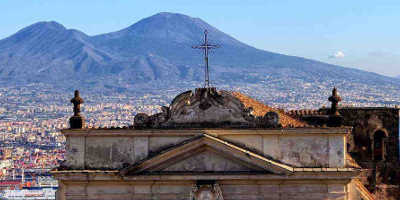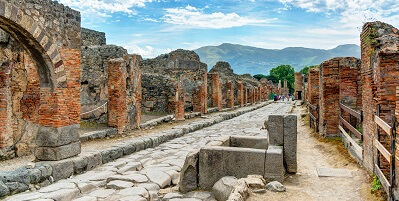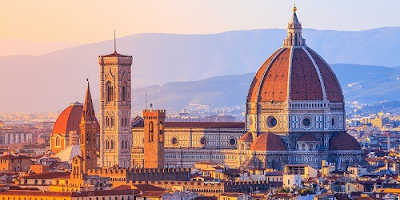What is the history of Mount Vesuvius?
The sleeping giant which has caused so much destruction lives on in the Campania region of Italy. Known for its preservation and annihilation of the ancient city of Pompeii, what else do we know about Mount Vesuvius?
Mount Vesuvius is famous for destroying the ancient city of Pompeii back in 79 A.D. But apart from that, what else do we know about it? The tragic destruction of Pompeii isn’t the only time this massive volcano has erupted and wasn’t the last. Read here to find out the secrets of this looming volcano in Southern-east Italy.
What is a Volcano?
A volcano is, in simplest forms is an opening in the earth’s crust. Where lava, volcanic ash, and poisonous gas’s escape from. From a distance, volcanos usually have a similar look to a large mountain, with only the opening at the top a variance in appearance. There are three types of volcanos; active, dormant, or extinct. Active Volcanos are defined by being the most recent eruptions, usually ranging in eruptions less than 10, 000 years ago. Dormant volcanos, on the other hand, have had a long time since their last eruption, usually past 10, 000 years but it is likely they will erupt again. Extinct volcanos will never erupt again, becoming more of a mountain than a dangerous volcano.
It’s History
Mount Vesuvius has a long history, dating back thousands of years before humans ever encountered it. Scientists have researched its age, finding ancient debris of rock on the volcano which confirmed the volcano’s age being around 300,000-400,000 years old. Hard to imagine isn’t it? Although the 79 A.D. incident is the volcano’s most famous eruption, it has been through numerous flare-ups.
Pre-79 A.D. Eruptions
Before Pompeii’s destruction, there were around eight gigantic and noteworthy eruptions in the last 17,000 years, with numerous smaller ones in-between them. Its first extremely destructive eruption was 25,000 years ago, but before that had many smaller explosions throughout its years. You might wonder how there was no warning to such a big eruption in 79 AD, surely there were signs? And you would be right! Sadly the mountain sent tremors into the city so often that the people of Pompeii grew used to them, thinking them nothing more than that – tremors. Little did they know the eruption that would eventually follow.
The 79 A.D. Eruption
Before the catastrophic destruction of Pompeii, no one in Italy knew of Mount Vesuvius’ danger. The story of Pompeii’s demise becomes even more tragic after discovering that the Pompeii people didn’t just have unknown knowledge of Mount Vesuvius but didn’t even have a word for a volcano, merely thinking the volcano was a large mountain. A good deal of people may believe that a volcano’s devastation is only due to the hot lava that flows from its top, but it is much more complex. There were waves of different events that aided the city’s destruction, with the eruption of Pompeii having numerous stages. Earthquakes were the first stage in the volcano’s eruption, but due to this being a common occurrence, Pompeii merely brushed this off. Vesuvius then erupted days later, causing a loud clatter of thunder sound, and blasted a huge cloud of volcanic smoke around 19 kilometres high. After this, large pyroclastic waves of gas, ash, and rock speed down towards Pompeii at speeds of 700 kilometres per hour. This was the main stage that killed the citizens, as those consumed in this wave were burnt alive with temperatures gathered up to 700 degrees Celsius. The entire eruption time lasted a full 24 hours, where it slowly buried the city in the thick layer of ash and rock.
After 79 A.D. Eruptions
Since Pompeii’s destruction, there have been about fifty eruptions, with the most recent in 1944 during World War II. It was a bad time for an eruption, with the locals already suffering dictatorial rule, invasion, and bombings. At the time of the eruption, the United States Army Air Forces 340th Bombardment Group was based at Pompeii, only a few kilometres from the base of the volcano. Although no military fatalities occurred, 26 Italian civilians were killed and nearly 12,000 were displaced. The eruption lasted a week and a half and was one of the worst eruptions in Mount Vesuvius’ recent history.
The Volcano Today
Vesuvius is still the only active volcano in all of Europe, nicknamed the ‘sleeping giant’ by locals. Scientists have estimated its time period between eruptions and have gathered it is due for another eruption soon. There are even more people living within the Volcano’s perimeter these days, with three million residents who are all at risk. However, due to modern technology, monitoring the volcano and its activity is much easier. With scientists researching its gas emissions, movements and other indicators which will give them warning whenever civilians or nearby wildlife are in danger. An evacuation has already been implemented in case of any eruptions. The areas have been dubbed either the ‘red zone’, which refers to the areas in closest danger and the rest which would be affected later on.
Although no activity from the volcano has been observed since 1944, there are still hazards to be close to the volcano. Would you dare climb it?
Related article: 11 Amazing Facts about Mount Vesuvius?

